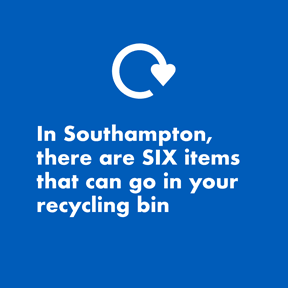Neglect
What is neglect?
Neglect is a form of maltreatment and is defined in Working Together to Safeguard Children (2018) as:
"'The persistent failure to meet a child’s basic physical and / or psychological needs, likely to result in the serious impairment of the child’s health or development. Neglect may occur during pregnancy as a result of maternal substance abuse. Once a child is born, neglect may involve a parent or carer failing to:
- Provide adequate food, clothing and shelter (including exclusion from home or abandonment)
- Protect a child from physical and emotional harm or danger
- Ensure adequate supervision (including the use of inadequate care-givers
- Ensure access to appropriate medical care or treatment
- It may also include neglect of or unresponsiveness to, a child's basic emotional needs."
In Southampton we recognise that prenatal neglect may be influenced by factors other than, or in addition to, substance misuse. Prenatal neglect may be associated with: failure to attend prenatal appointments or to follow medical advice; smoking; and / or experiencing domestic violence during pregnancy.
Neglect is the most common type of abuse experienced by children and young people in England. Figures from 2020 recorded neglect as the primary need for 50% of children and young people on Child Protection Plans.
What types of neglect might children and young people experience?
Howarth (2007) identified six different types of neglect:
- Medical neglect - the child’s health needs are not met, or they are not provided with appropriate treatment needed as a result of illness or accidents
- Nutritional neglect - the child is given insufficient calories to meet their physical / developmental needs, or they are given food of insufficient nutritional value, e.g. high fat or high sugar junk food in place of balanced meals; childhood obesity can be a sign of neglect
- Emotional neglect - the carer does not respond to the child’s basic emotional needs, including failing to interact or provide affection
- Educational neglect - the child does not receive appropriate learning experiences; they may be under-stimulated and / or experience a lack of interest in their achievements. This may include not sending their child to school regularly, and / or failing to respond to special educational needs
- Physical neglect - the child may have inadequate or inappropriate (e.g. for the weather conditions) clothing, poor levels of hygiene, lack of clean living conditions, abandonment or exclusion from home
- Lack of supervision and guidance - the child may be exposed to hazards, parents or caregivers may be inattentive to avoidable dangers or may leave the child with inappropriate carers. Lack of supervision can include not providing appropriate boundaries for young people, e.g. about under-age sex and alcohol use
What is the impact of neglect for children at different ages?
Research has shown that children and young people’s experiences of neglect, and the short and long term impact it has on them, can vary with age. For example:
- Prenatal neglect - adverse experiences during pregnancy have been linked with a number of poor outcomes, including low birth weight, premature birth, higher risk of sudden infant death syndrome (SIDS) and impaired cognitive and social functioning
- Infancy (birth - 2 years) - Disinterest or failure to offer stimulation (e.g. through games like ‘peek-a-boo’) will limit the child’s cognitive development as well as their attachment, since babies learn and develop neural connections and cognitive functioning through interaction with the world and with their caregivers
- Pre-school (2 - 4 years) - children of this age tend to be mobile, but lack understanding of danger and need close supervision for their physical protection, which neglectful families may not provide. Children who are experiencing neglect may not be appropriately toilet trained, and their language development may be delayed
- Primary (5 - 11 years) - if neglected children have delayed cognitive development, school can be a source of frustration and distress. Signs of neglect such as dirty clothing will be apparent, which may lead to embarrassment and social difficulties. Children without boundaries may find it difficult to follow school rules, and if neglect includes failure to ensure school attendance their attainment is likely to be affected
- Adolescence (12 - 18 years) - neglect is likely to have an impact on their ability to form and maintain friendships. If they have never been taught to prepare meals, their diets may lean towards high-fat, high-sugar convenience foods. Risk-taking behaviour e.g. alcohol or substance use, risky sexual behaviour or criminal activity may be attributed to or exacerbated by a lack of parental supervision
How do we respond to neglect in Southampton?
In Southampton, when practitioners recognise and identify neglect within a family, they must assess the need and respond appropriately using an Early Help approach to start conversations with the right people to identify how help should be provided.


